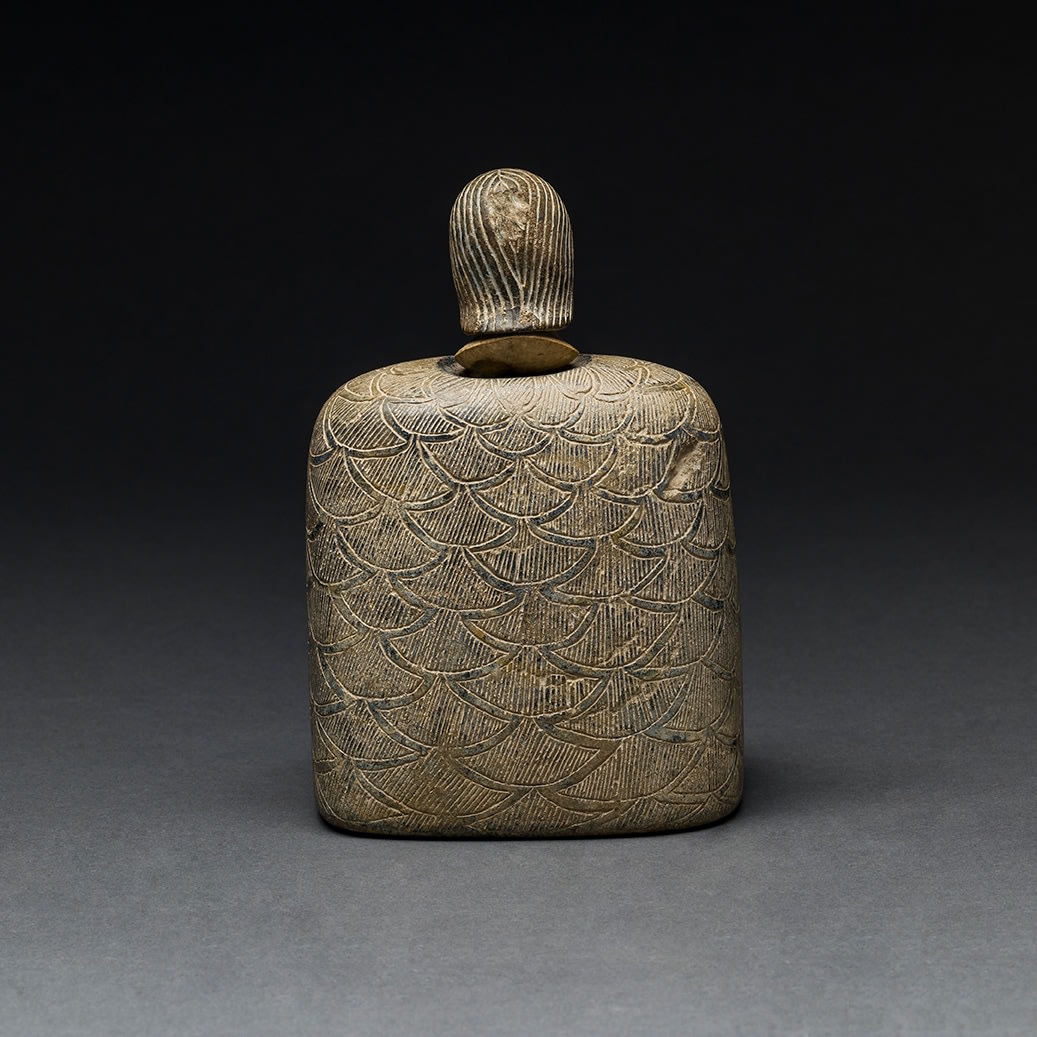Bactria-Margiana Stone Idol, 2100 BCE - 1700 BCE
Stone
4.5 x 5
LM.006
Further images
This piece pertains to an ancient culture referred to both as the Bactria-Margiana Archaeological Complex (BCAM) or as the Oxus Civilisation. The Bactria-Margiana culture spread across an area encompassing the...
This piece pertains to an ancient culture referred to both as the Bactria-Margiana Archaeological Complex (BCAM) or as the Oxus Civilisation. The Bactria-Margiana culture spread across an area encompassing the modern nations of Turkmenistan, Tajikistan, Uzbekistan and Northern Afghanistan. Flourishing between about 2100 and 1700 BC, it was contemporary with the European Bronze Age, and was characterised by monumental architecture, social complexity and extremely distinctive cultural artefacts that vanish from the record a few centuries after they first appear. Pictographs on seals have been argued to indicate an independently-developed writing system. It was one of many economic and social entities in the vicinity, and was a powerful country due to the exceptional fertility and wealth of its agricultural lands. This in turn gave rise to a complex and multifaceted set of societies with specialist craftsmen who produced luxury materials such as this for the ruling and aristocratic elites. Trade appears to have been important, as Bactrian artefacts appear all over the Persian Gulf as well as in the Iranian Plateau and the Indus Valley. For this reason, the area was fought over from deep prehistory until the Mediaeval period, by the armies of Asia Minor, Greece (Macedonia), India and the Arab States, amongst others. Small stone composite figurine portrayed squatting, wearing a robe decorated with a low relief abstract wavy pattern, perhaps imitating sheep's fleece, with a limbless body. This figurine could be ascribed to a group of composite statuettes made of soft black steatite or chlorite and alabster unearthed prevalently in Bactria- Margiana and dating to the early 2nd millennium BC. Western Central Asia or Bactrio-Margiana, now known as Turkmenistan, Uzbekistan, and northern Afghanistan, has yielded objects attesting to a highly developed civilization in the late third and early second millennium B.C. Artifacts from the region indicate that there were contacts with Iran to the southwest. As clay copies of such statuettes have also been found in burial contexts, it is likely that they would have been made of various materials. Unfortunately the archaeological evidence is still lacking, as many of the statuettes from excavated sites are either incomplete or shattered. Such composite statuettes, always carefully executed, have been generally associated with burials and probably portrayed the women buried in the grave. Yet, the standardisation of their shapes would seem to point to an ideal rather than a real person, including the fact that some of the best representations of squatted ladies in compartemented seals from the same area and time featured also wings or animals suggesting a divine connotation. For examples of composite female figurines see: J. Aruz ed, Art of the First Cities, New York, 2003: pp. 367-368, and V. Sarianidi, Margus, 2002: 138-145. - (LM.6)







